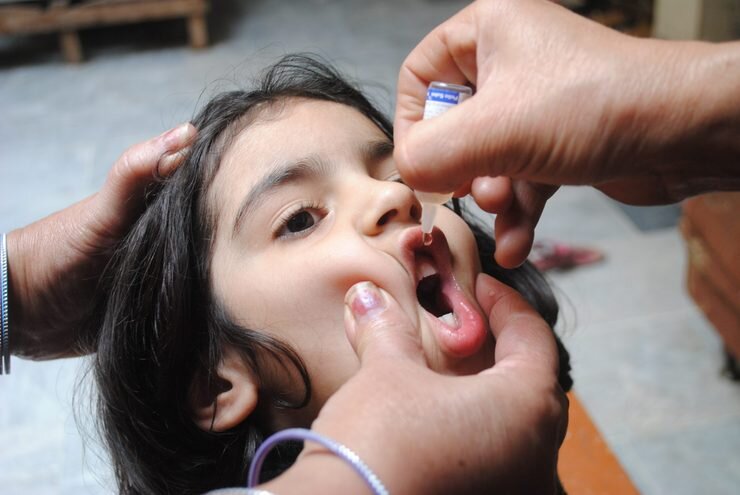All immigrants to be vaccinated against polio, measles

TEHRAN – All foreign immigrants and refugees under the age of five will be vaccinated against polio and measles.
To eradicate polio, the oral vaccination plan will be implemented in two phases. The first phase started on May 7 and will continue until May 10, and the second phase will run from June 11 to 13, Mohammad Reza Sarbazi, director of the department of disease prevention and control of the Shahid Beheshti University of Medical Sciences, said.
Due to the transmission of poliovirus in Asia and Africa and the indigenous virus in Afghanistan and Pakistan, it is necessary to carry out additional annual immunization operations to maintain polio-free, he explained.
In this large-scale operation, Iranian children under the age of five and foreign immigrants will be inoculated through door-to-door visits in high-risk areas across the country, he further stated.
In this plan, all children aged 5 years or younger in high-risk areas, regardless of previous immunization history, will receive two drops of oral vaccine and will repeat by four to six weeks.
Poliomyelitis (polio) is a highly infectious viral disease that largely affects children under 5 years of age. The virus is transmitted by person-to-person spread mainly through the fecal-oral route or, less frequently, by a common vehicle (e.g. contaminated water or food) and multiplies in the intestine, from where it can invade the nervous system and cause paralysis.
Over the last decade, the Global Polio Eradication Initiative (GPEI) made steady progress on the path to eradication. Wild poliovirus types 2 and 3 (WPV2 and WPV3) were declared eradicated in 2015 and 2019, respectively; the World Health Organization (WHO) South-East Asia Region was declared free of poliovirus in 2014; and most recently, the WHO African Region was certified free of wild poliovirus (WPV) in August 2020. However, the final steps towards eradication have proven the most difficult.
Measles outbreak in neighboring countries
Concerns about the spread of measles in the country are growing as the Afghan population grows, Mohsen Zahraei, head of the department of preventable diseases with vaccines of the Ministry of Health, also said.
Measles mostly infects children under the age of 10, and all families need to get their children vaccinated between the ages of 12 to 18 months, he said, adding that vaccination will be free of charge.
Iranian children under the age of five and foreign immigrants will be inoculated through door-to-door visits in high-risk areas across the country. The measles vaccination program in Iran started in 1984 when 34 percent of the population was vaccinated in the first year and 90 to 95 percent of the population after 6 years. Also in 2003, 33 million people were vaccinated with a national program to eradicate measles in the country.
“We managed to minimize the measles incidence rate in three years and increase vaccination coverage to 95 to 98 percent. In 2019, the World Health Organization approved the elimination of measles and rubella in Iran,” he noted.
According to him, in the Eastern Mediterranean region, among the 22 countries, only three countries of Bahrain, Oman, and Iran, have succeeded in receiving this approval, which is a sign of health indicators promotion that plays an important role in tourist arrivals and development process.
However, we are witnessing measles outbreaks in Afghanistan, Pakistan, and Iraq.
“We have stepped up our efforts to maintain the achievement of measles elimination by identifying 3,000 cases of suspected measles in one month, and by early last week, 120 positive cases of measles had been recorded, which is also increasing.
Some 64 percent of the infected people are Afghans, 3 percent are Pakistanis and the rest are Iranians. The disease causes severe symptoms in people with malnutrition, including blindness, pneumonia, and brain infection.
The disease is much more contagious than coronavirus, and kills one to five percent of the patients,” he explained.
Measles is a highly contagious, serious disease caused by a virus. Before the introduction of the measles vaccine in 1963 and widespread vaccination, major epidemics occurred approximately every 2–3 years and measles caused an estimated 2.6 million deaths each year.
More than 140,000 people died from measles in 2018 – mostly children under the age of 5 years, despite the availability of a safe and effective vaccine.
Measles is caused by a virus in the paramyxovirus family and it is normally passed through direct contact and through the air. The virus infects the respiratory tract, then spreads throughout the body. Measles is a human disease and is not known to occur in animals.
FB/MG
Leave a Comment